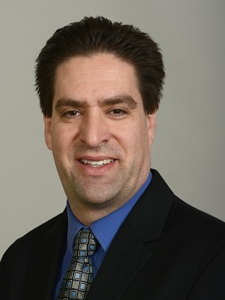This interactive workshop focuses on realizing cutting-edge neurotechnologies that have the potential to enhance the human condition. In the morning session, a mixture of panel and breakout discussions will focus on sensing technologies: what advancements have been achieved in recent years? What are the critical gaps that would enable a rapid leap forward in capabilities? What is the role of academia, industry, and government in addressing these critical gaps? What standards need to be addressed or created to make technologies accessible to the community?
In the afternoon session, we will focus on how next-generation neurotechnologies will change the nature of how humans interact with the world: how will these technologies change the way human decisions are made? What is the role of AI in the application of neurotechnologies? How will they influence the interaction between people and/or AI systems? To ground the discussion, we will take inspiration from science fiction characters and technology. The workshop will use specific sci-fi capabilities and archetypal characters to frame the debate about how near we are to achieving these aspirational goals. In breakout groups, we will discuss how past successes and failures have informed our current research objectives and methodologies. We will also discuss and articulate predictions on how research in this area will proceed in the coming decade, and what courses of action might be appropriate for academia, industry, and government. The workshop will include background material on the sci-fi references so no previous knowledge is needed.
Organizers
Jonathan Touryan
 Dr. Jonathan (Jon) Touryan is a neuroscientist at the U.S. Army Research Laboratory’s (ARL) Human Research and Engineering Directorate. He joined ARL from SAIC (now Leidos) in 2012 where he managed the company’s neuroimaging facility and lead research efforts in the human neurosciences for various defense agencies, including DARPA, ARL, and AFRL. His prior research explored the neural correlates of performance in real-world tasks such as driving. Currently, his work focuses on the use of eye tracking and EEG to elucidate the endogenous and exogenous sources of variability in visual search. For the last five years, he has lead the Cognition and Neuroergonomics (CaN) Collaborative Technology Alliance (CTA), ARL’s extramural program in the neurosciences.
Dr. Jonathan (Jon) Touryan is a neuroscientist at the U.S. Army Research Laboratory’s (ARL) Human Research and Engineering Directorate. He joined ARL from SAIC (now Leidos) in 2012 where he managed the company’s neuroimaging facility and lead research efforts in the human neurosciences for various defense agencies, including DARPA, ARL, and AFRL. His prior research explored the neural correlates of performance in real-world tasks such as driving. Currently, his work focuses on the use of eye tracking and EEG to elucidate the endogenous and exogenous sources of variability in visual search. For the last five years, he has lead the Cognition and Neuroergonomics (CaN) Collaborative Technology Alliance (CTA), ARL’s extramural program in the neurosciences.
Paul Sajda
 Paul Sajda (Fellow, IEEE) is a Professor in the Departments of Biomedical Engineering, Electrical Engineering, and Radiology and Director of the Laboratory for Intelligent Imaging and Neural Computing, Columbia University, New York, NY. Much of his current research focuses on using multimodal neuroimaging and behavioral measures to track selective attention and the dynamics of cognitive state during rapid decision making. He also applies these basic scientific findings to engineer neurotechnology systems that improve human–machine interaction. Prof. Sajda is the Editor-in-Chief of the IEEE Transactions on Neural Systems and Rehabilitation and Chair of the IEEE BRAIN Initiative
Paul Sajda (Fellow, IEEE) is a Professor in the Departments of Biomedical Engineering, Electrical Engineering, and Radiology and Director of the Laboratory for Intelligent Imaging and Neural Computing, Columbia University, New York, NY. Much of his current research focuses on using multimodal neuroimaging and behavioral measures to track selective attention and the dynamics of cognitive state during rapid decision making. He also applies these basic scientific findings to engineer neurotechnology systems that improve human–machine interaction. Prof. Sajda is the Editor-in-Chief of the IEEE Transactions on Neural Systems and Rehabilitation and Chair of the IEEE BRAIN Initiative
Amy Kruse
 Dr. Amy Kruse is the Chief Scientific Officer of the Platypus Institute, an applied neuroscience research organization that translates cutting-edge neuroscience discoveries into practical tools and programs which enhance the human experience. Dr. Kruse’s primary focus at the Platypus Institute is a project entitled “Human 2.0” – a multi-faceted initiative that helps selected individuals and teams leverage neurotechnology to generate meaningful competitive advantages. Her ultimate goal with the Human 2.0 project is to create a vibrant, widespread neurotechnology industry that allows humanity to upgrade the human brain and, thereby, the human condition.
Dr. Amy Kruse is the Chief Scientific Officer of the Platypus Institute, an applied neuroscience research organization that translates cutting-edge neuroscience discoveries into practical tools and programs which enhance the human experience. Dr. Kruse’s primary focus at the Platypus Institute is a project entitled “Human 2.0” – a multi-faceted initiative that helps selected individuals and teams leverage neurotechnology to generate meaningful competitive advantages. Her ultimate goal with the Human 2.0 project is to create a vibrant, widespread neurotechnology industry that allows humanity to upgrade the human brain and, thereby, the human condition.
Before joining the Platypus Institute, Dr. Kruse served as the Vice President and Chief Technology Officer of Cubic Global Defense, where she oversaw the company’s research and development (R&D) programs. Her efforts at Cubic dramatically accelerated and enhanced the company’s R&D capabilities, which in turn yielded an expanded product portfolio and increased sales. Prior to her work at Cubic, Dr. Kruse served as a government civilian program manager at the Defense Advanced Research Projects Agency (DARPA), where she created and oversaw the Agency’s first performance-oriented neuroscience program. Her efforts at DARPA generated scientific breakthroughs in areas including augmented cognition, accelerated learning, cognitive enhancement, team neurodynamics, and brain stimulation, and they resulted in the creation of multiple programs that measurably enhanced both individual and team performance in several branches of the US military.
Amy is Founding Member of the Loomis Innovation Council at the Stimson Center in Washington DC, a member of the DARPA ISAT Study group and a Guest Lecturer for Singularity University. She is a frequent contributor to several defense panels and advisory boards for organizations including DARPA, the National Academies and the Defense Science Board. She is also the author of numerous scientific papers, chapters, and articles.
